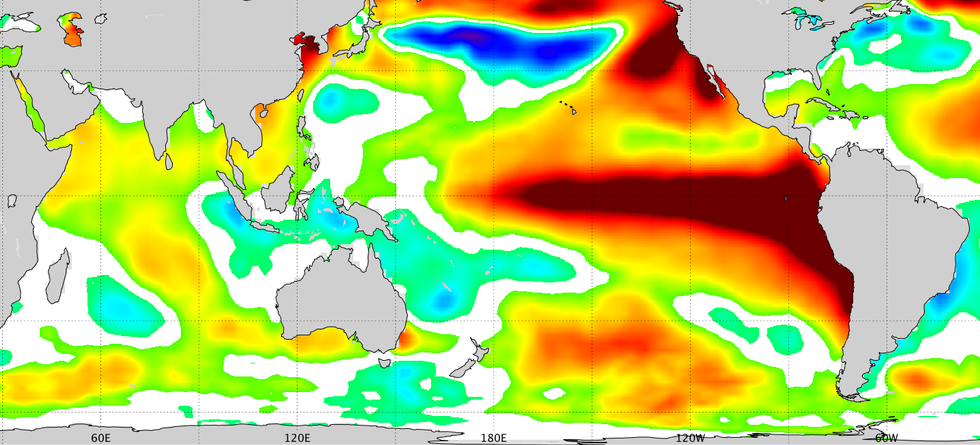Written by Martin King, researcher at the Bjerknes Centre and NORCE.
In a recent study we found that the most extreme (super) El Niños are linked to drought condition in western and southern Europe. This effect is not expected from strong El Niños, as connections with wet conditions are reported in previous studies (see figures below).
El Niño is one phase of the atmosphere-ocean coupled phenomenon known as El Niño-Southern Oscillation (ENSO) in the tropical Pacific Ocean when the sea surface temperature (SST) is warmer than average. It can develop and decay over several months from before to after the boreal winter with irregular periods of roughly 2 to 4 years.
The opposite cold phase of ENSO is popularly known as La Niña. ENSO impacts in the tropical and subtropical regions are clear and better understood. However, its impacts in the mid-to-high latitudes such as over the North Atlantic-Europe sector, are often debated by climate scientists.
In the study, we differentiate between an extreme and a strong El Niño. Over the last millennium a strong El Niño occurs on average once every decade, while an extreme El Niño occurs once in 70 to 100 years! A La Niña of such magnitude as an extreme El Niño is not seen during the instrumental period. We are interested in how these two types of El Niños affect hydroclimate in Europe.
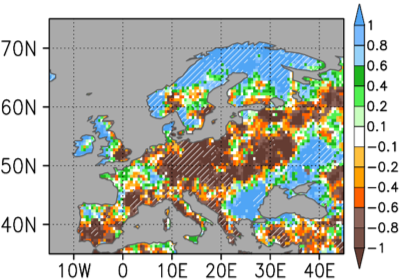
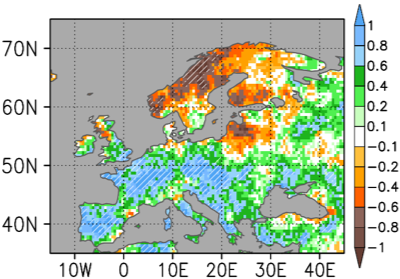
We examined the Palmer Drought Severity Index (PDSI) formulated in the Old World Drought Atlas (OWDA), PDSI calculated from the Community Earth System Model-Last Millennium Ensemble (CESM-LME) with 10 members, as well as data for the instrumental period. The analyses carried out benefitted from the large samples. PDSI indicates persistent drought (by negative values) or pluvial conditions (positive values) calculated from temperature, precipitation and soil moisture, and it is not merely instantaneous anomalies in evaporation and precipitation balance.
OWDA is a climate reconstructions using tree-ring chronologies in Europe. It is believed that tree ring widths are linked to hydroclimate conditions in spring and summer when plant growth is most active.
The paper reports that the model is able to reproduce the wetter conditions in Europe associated with strong El Niños that are seen in climate reconstructions and instrumental measurements. But it cannot simulate the drought condition due to extreme El Niños. In fact, it seems the model consistently produces only one type of teleconnection and is 'immune' to different types of ENSO-related SST.
The tree-ring derived PDSI data, on the contrary, recorded the effect of the extreme El Niños, but not that for the strong El Niños. This may not be surprising because the effects of even the strong El Niños probably will have diminished by summertime in Europe, while only the most extreme ones exerted their impacts on tree rings growth substantially and persistently until the summer.
As has been reported in a few previous studies, the atmospheric circulations linked to the extreme and strong El Niños in the North Atlantic-Europe sector are also different and in ways that are consistent with the PDSI anomalies obtained (see figures below).
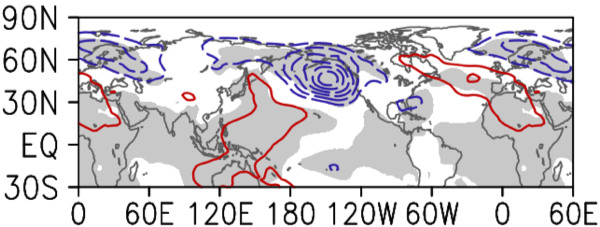
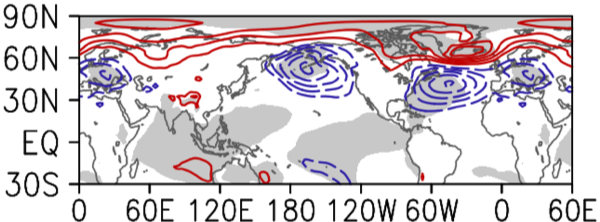
Climate prediction beyond the limit of weather forecast relies on so-called physical sources of predictability. Another example of long-range predictability source is anthropogenic global warming, although there are other uncertainties associated with this. Arguably, ENSO is the strongest and most predictable natural process affecting seasonal climate.
The variability, intensity, and types of ENSO SST might also change substantially under global warming. Interestingly, three extreme El Niños were already observed in the last few decades, despite the fact that they should be very rare. There are many outstanding issues such as models performance, mechanisms, aspects in statistics, contribution to predictability, and impacts due to ENSO diversity.
Research such as the current study is important for understanding that can lead to improvement of climate prediction, and preparation for seasonal and future climate impacts.
This study is part of the ClimateXL project funded by the Research Council of Norway. My collaborators are Entao Yu of the Nansen-Zhu International Research Center, Chinese Academy of Sciences, Beijing, China; and Jana Sillmann of CICERO in Oslo.
References and further reading
- King et al., 2020, Impact of strong and extreme El Ninos on European hydroclimate, Tellus A. https://doi.org/10.1080/16000870.2019.1704342
- Bronnimann et al., 2007. ENSO influence on Europe during the last centuries. Clim. Dyn. 28, 181–197. https://doi.org/10.1007/s00382-006-0175-z.
- Toniazzo and Scaife, 2006, The influence of ENSO on winter North Atlantic Climate, Geophys. Res. Lett. https://doi.org/10.1029/2006GL027881
- Domeisen et al., 2018, The teleconnection of El Nino Southern Oscillation to the stratosphere, Rev. Geophys. https://doi.org/10.1029/2018RG000596

